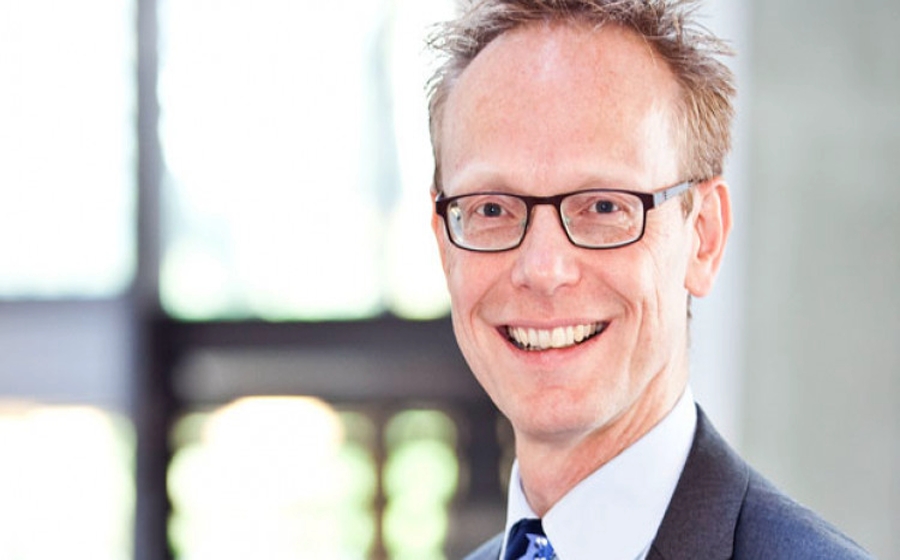
On 17 June, Professor of Applied Research methodology at Utrecht University of Applied Sciences, Daan Andriessen, will speak at the fourth Masterclass in the Impact of Research (Impact van onderzoek) series. He has been researching the relationship between practice and research since 2003 and, given his knowledge and experience in the field of transformative research impact, his contribution to this masterclass series is indispensable.
Andriessen starts the masterclass with a concise review of 20 years of applied research, and in doing so shows that research in higher education is in full development. There is much discussion, both nationally and internationally, about applied research and how to give it substance. Andriessen goes into greater depth on a number of issues.
One such issue is the use of the concept of ‘continuous effects’ (‘doorwerking’ in Dutch) versus ‘impact’. Whereas previous guest speakers make little or no distinction between these concepts, Andriessen advocates using the term ‘continuous effects’. Research in higher education shows a subtle – non-linear – process between practice and research. According to Andriessen, you could compare it to a seed that slowly grows in all directions, with value being derived from the research in multiple ways by various stakeholders. It is this interaction between practice and research that makes research at universities of applied sciences so rewarding, he believes. After all, researchers learn as much from the practitioners they work with as the other way around.
Andriessen firmly believes that accountability for continuous effects does not come into its own in a process model, and for a few years now he – and other researchers at Utrecht University of Applied Sciences – have been working with a conceptual model, also called the PRIME model: Practice-based Research Impact Measurement and Evaluation. What does the PRIME model entail? The model distinguishes four forms of continuous effects: knowledge development, personal development, system development and product development. In the first variant, the continuous effects arise when someone absorbs the knowledge generated by research, resulting for example in behavioural change. In the second variant, the continuous effects are what all stakeholders (including the researcher) learn from the research process. In the third variant, a systematic change occurs as a result of the research, such as a municipality adjusting its policy or an institution changing its protocols. In the fourth variant – product development – the continuing effects are related to something created in the research that is used in practice (a product, a manual or a guideline).
PRIME is not just intended to provide accountability for continuous effects, but also allows researchers to think from the outset about productive interactions that can or should take place during the research. According to Andriessen, the PRIME model is useful for developing a broader perspective on research by thinking about the different variants of continuous effects in advance. Andriessen shows how the continuous effects of research can then be visualised in a matrix, where the different variants are distinguished and linked to the areas where these forms of continuous effects become visible: professional practice and society, education and professional development and, finally, science.
When asked at what level this methodology is best used, Andriessen’s answer is: at programme level or within a line of research. Different research projects within one research line reinforce each other, with some research projects focusing more on knowledge development and others within the same research line concentrating, for example, on the implementation of new policies (system development). It is also precisely at this level that the different impact narratives can be merged, says Andriessen.
How can this methodology be rendered more visible; be accounted for? Figures but also stories are important in this respect, says Andriessen. It is crucial to figure out how to do that; show the relevant indicators along with narratives that give meaning to those indicators. Or elaborate narratives, taking indicators as evidence to accompany those narratives. At Utrecht University of Applied Sciences, there is a lot of discussion about these two ways of demonstrating continuous effects.
Andriessen favours doing so through narratives with indicators. This addresses the specific aims of research units and can reflect the continuous effects in a much more sophisticated way, he says. In applied research, continuous effects can occur without any output. So if there is no output but there are continuous effects, you have to create a story, a narrative, about that to illustrate what the continuous effects are.
What fosters continuous effects? Andriessen puts forward a number of key principles for this. Involve your stakeholders from the start, research an issue from real-life practice and do not pursue only one goal but multiple research objectives. On the basis of these guiding principles and previously mentioned methodology, researchers can ‘circle’ around their research with a matching worksheet. How to give further substance to this will become clear from a workshop that will follow this.
Publication by Daan Andriessen: Circling your Research (2019) (in Dutch).
Esther Tielen

